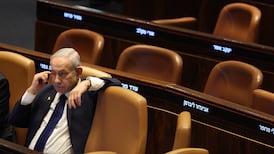The beheading by Islamic State of Palmyra's guardian angel archaeologist Khaled al-Asaad (83 ) and the demolition of the iconic Baalshamin temple in the ancient city's ruins have provided publicity-seeking IS with global headlines and condemnation. Both are tools for recruiting disaffected youth across the world, particularly in the Muslim community, the "Umma".
The murder of Asaad and the dynamiting of the temple appear to respond to a concerted effort by the UN, US, Russia, and Iran to launch peace talks among various Syrian players and to increased pressure on Turkey, Saudi Arabia and Gulf states to halt the flow of fighters, arms and money to IS.
The radical Sunni cult may also be seeking to remind peace-makers that it not only opposes an end to the conflict in Syria and Iraq but will also take action to undermine or negate negotiations, in order to sustain the war.
The cult has previously used the destruction of ancient Nimrod and Hatra in Iraq, which belong to the cultural heritage of mankind, to punish opponents seeking to preserve these sites. IS does not see the Syrian and Iraqi governments, but the West and all its works, as the cult's primary enemy.
Through these defiant outrages, IS has announced the year-long US-led coalition’s aerial campaign against it has not compelled it to abandon the wide swathes of territory it holds in Syria and Iraq and is unlikely to do so.
By destroying the Baalshamin temple, dedicated in 17AD to the sky god worshiped in Palmyra, IS demonstrated to potential recruits and supporters it is prepared to wipe out remnants of idolatry in the region and the wider Muslim world.
So far, IS has destroyed Shia and Sunni mosques and shrines, Christian churches, Christian and Muslim tombs and mausoleums, as well as ancient artefacts in the Mosul museum, not relocated to Baghdad ahead of IS conquest of the city.
Cultural pasts
Islamic State has a long-term objective of transforming locations it holds into “ground zero”, where the historical and cultural pasts and identities of conquered communities are erased, making it easier to convert them to the cult’s version of puritanical Wahhabi Islam originally practised in Saudi Arabia.
For IS, ruins of ancient and medieval civilisations are obstacles to its plans, while their movable treasures are valuable trade goods bringing in revenue for the cult and individuals in charge.
Finally, on the psychological level, IS commanders and fighters appear to get immense satisfaction from raping, enslaving and executing captives, blowing up monuments and attacking the global 21st century way of life.
They celebrate these activities by posting videos online. Their satisfaction is enhanced because they can do whatever they want. No one is seriously trying to hinder or stop them.












